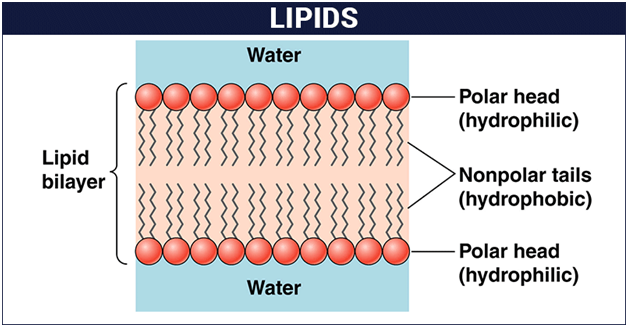INTRODUCTION: Lipids contain the elements carbon, hydrogen, and oxygen; some also contain phosphorus. In this group of organic compounds are different types of substances with very different functions. In our discussion here, we will consider three types: true fats, phospholipids, and steroids.
True fats also called neutral fats, are made of one molecule of glycerol and one, two, or three fatty acid molecules. If three fatty acid molecules are bonded to a single glycerol, a triglyceride is formed. Two fatty acids and a glycerol form a diglyceride, and one fatty acid and a glycerol form a monoglyceride.
THE EXTENT AND DEGREE OF BONDING IN FATTY ACIDS: It should also be noted that, the fatty acids in a true fat may be saturated or unsaturated. This is where one of the fatty acids has single covalent bonds between all its carbon atoms. Each of these carbons is then bonded to the maximum number of hydrogens; this is a saturated fatty acid, meaning saturated with hydrogen. On the other hand, a fatty acids may have one or more (poly) double covalent bonds between their carbons and less than the maximum number of hydrogens; these are then termed unsaturated fatty acids. Many triglycerides contain both saturated and unsaturated fatty acids.
DISTINCT APPEARANCE OF FATS: At room temperature, saturated fats are often in solid form, while unsaturated fats are often in liquid form. Saturated fats tend to be found in animal foods such as beef, pork, eggs, and cheese, but palm oil and coconut oil are also saturated. Unsaturated fats are found in other plant oils such as corn oil, sunflower oil, and safflower oil, but certain fish oils are also unsaturated, and even pork contains unsaturated fatty acids.
ROLE OF FATS IN THE HUMAN BODY: The triglyceride forms of true fats are a storage form for excess food, that is, they are stored energy. Any type of food consumed in excess of the body’s caloric needs will be converted to fat and stored in adipose tissue. Most adipose tissue is subcutaneous, between the skin and muscles.
RELATED;
1. PROTEINS
3. BIOMOLECULES AND CHEMICALS OF LIFE












No comments:
Post a Comment